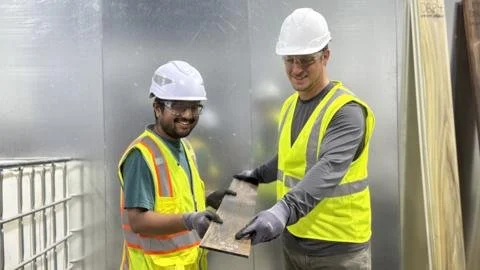Could Your Home Withstand a Bullet? Discover the Revolutionary 'Superwood'!
Could your house take a bullet for you? Introducing Superwood, a groundbreaking modified wood developed by InventWood, which claims to be stronger than steel. This marvel of engineering underwent rigorous testing, where a bullet-like projectile easily penetrated natural wood but was stopped by the fortified version of Superwood, suggesting potential military applications such as in battlefield shelters.
In the ongoing decarbonization efforts in construction, traditional materials like concrete face scrutiny due to their high greenhouse gas emissions. Advocates for wood-based construction argue that it can combat climate change by sequestering carbon over long periods. However, natural timber has limitations, including susceptibility to moisture and pests. This is where techniques for engineered wood products come into play, providing enhanced strength and resilience, essential for modern structural needs.
Mr. Lau describes how the wood is treated: removing lignin (a natural polymer) and compressing it to reduce its volume by 80%, thus creating additional hydrogen bonds that significantly enhance its strength and reduce thickness while retaining attractive wood grain.
InventWood has drastically improved its production time, creating Superwood within hours instead of weeks, initially using poplar trees, and even considering bamboo for its rapid growth. Innovative engineered wood products like glulam and cross-laminated timber (CLT) already exist on the market, offering alternatives to concrete with reduced carbon footprints during construction.
While Superwood isn’t aimed at replacing these existing materials, it could serve as an aesthetically pleasing and structurally sturdy finishing layer or external cladding. Experts, including Morwenna Spear from Bangor University’s BioComposites Centre, see promise in Superwood but emphasize the need for performance data in variable weather conditions.
Other companies are also exploring engineered wood possibilities; for instance, BauBuche utilizes beech, typically a less favored construction material, while 3RT focuses on blending lower-value tree species into structures akin to high-quality hardwood. With so many options, designers today have a broader palette to work with when incorporating wood into architecture.
Despite the advantages, challenges remain, such as the need for affordable mortgages and insurance for wooden structures. While concerns surrounding wood fires exist, Lau asserts that Superwood has demonstrated fire resistance and resilience against pests. Notably, it can still be worked with traditional tools, making it practical for use.
As engineered wood products gain popularity, the relevance of recycling timber is also highlighted. Many contemporary materials are derived from recycled wood, illustrating how innovative uses of wood have integrated into everyday life. Today’s architects and designers are empowered by these advancements, reinforcing the diverse applications of wood in modern construction.

